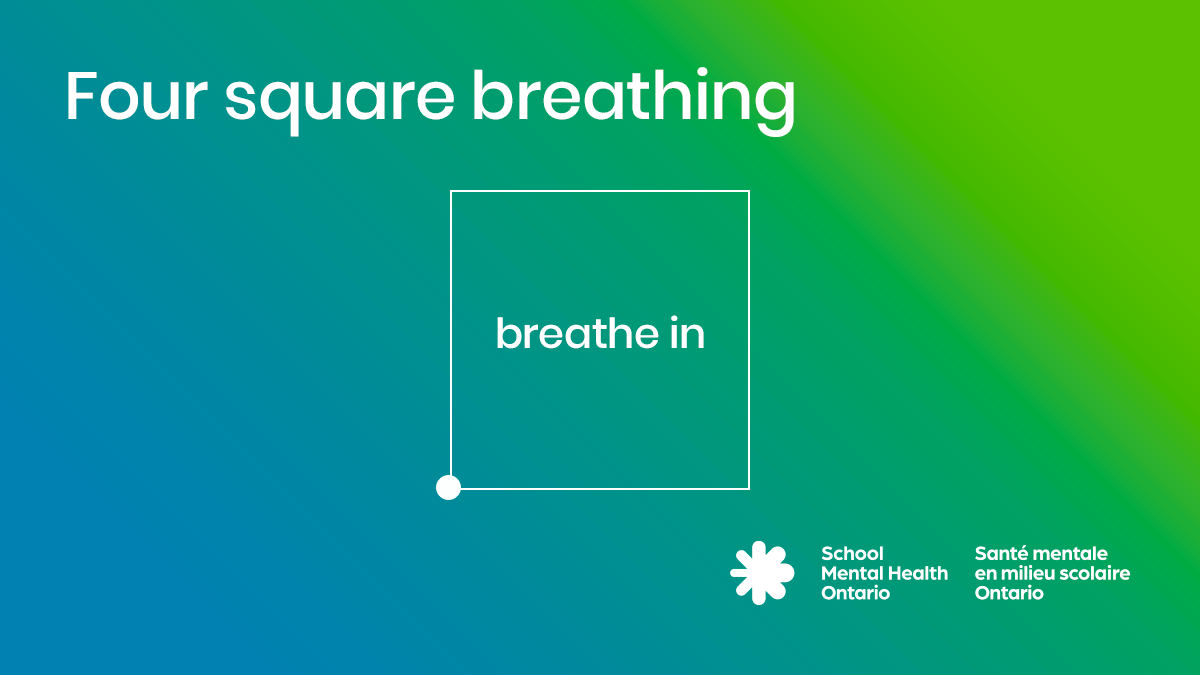


Time
10-15 minutes
Level
Primary / Junior / Intermediate
Material
Music (optional)
Purpose
To help students develop a deeper mind/body connection, self-regulation, awareness of emotions, and resiliency by practicing deep breathing
Select a breathing practice that appeals to your group of students and your comfort level. For each practice, stand/sit with your back straight and keep your shoulders and head relaxed as you gaze forward.
| Deep belly breathing |
|
| Hot chocolate |
|
| Breathing kindness |
|

Four square breathing:
- breathe in
- hold
- breathe out
- hold
- Try this with students lying on their backs. Younger students may find it helpful to put an object on their stomach to watch it go up and down as they take a deep breath. Coach them on the breathing by counting in for four and then exhaling for four.
Guided breathing exercises are an effective tool to help students regulate emotions (Metz et al., 2013). These interventions decrease physiological arousal, so the emotion and anxiety students feel becomes less intense (Gregoski, Barnes, Tingen, Harshfield, & Treiber, 2011), and students can refocus their attention on learning.
Gregoski, M. J., Barnes, V. A., Tingen, M. S., Harshfield, G. A., & Treiber, F. A. (2011). Breathing Awareness Meditation and LifeSkills Training Programs Influence Upon Ambulatory Blood Pressure and Sodium Excretion Among African American Adolescents. Journal of Adolescent Health, 48(1), 59-64. doi:10.1016/j.jadohealth.2010.05.019
Metz, S. M., Frank, J. L., Reibel, D., Cantrell, T., Sanders, R., & Broderick, P. C. (2013). The Effectiveness of the Learning to BREATHE Program on Adolescent Emotion Regulation. Research in Human Development, 10(3), 252-272. doi:10.1080/15427609.2013.818488
Or, view all practices and use filters to find what you need
